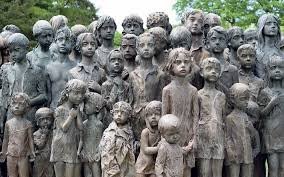Remembering
Yesterday, the New York Times published the names of 1000 of the 100,000 people who have died from coronavirus thus far this year. Incalculable, indeed. Every one who died of COVID19 has a life story and family members who are grieving, often without any in-person funeral rites. In a way, this reads like the Vietnam War Memorial. Putting names in print is an act of remembrance. Besides these losses, many will remember how life nearly came to a halt during this time, the early consolations and assurances by the President, the pause before the storm as reports crossed the ocean from Italy and Spain, and the lack of any national coordinated effort to mitigate the pandemic. As the worldwide confirmed cases exceed 5 million, the US has experienced more than 1 in 4 of the deaths due to coronavirus worldwide. The missed opportunities, on top of the loss of life and loss of health for so many, are griefs to bear.
Healthcare workers have borne a great burden during this season, not only on the frontlines with risk of exposure, but also in small practices where things are anything but business as usual. At our practice, we have done everything we can for our patients to stay safe and well and to make virus-driven adjustments. Some practices closed entirely, while others strictly limited visits. This has come at a cost. I worry about the mental health toll on healthcare workers, as so elegantly told in this video documentary by Dr Arghavan Salles. Many have compared it to wartime. Only this time, our enemy is not human but rather a virus. The PBS Documentary also memorializes the 1918 Flu Pandemic and is well worth the watch. The lived experience of the 1918 influenza is shared by very few who are still alive today.
There is a value of remembering. It seems like DC memorials like the WWI and WWII and even the MLK are designed to remind of of what is worth fighting for, of the value of freedom which has always come at a cost. Other memorials, like battlefields of Antietam, Gettysburg and Manassas serve to remind of of just how dreadful war can be. Finally, the US is memorializing slavery and lynching history and celebrating heroes like Harriet Tubman. This was only after Southern states, including Maryland, put up Civil War confederate hero statues in the 20th century, many of these recently removed from public squares.
Around the world are other memorials, like the Holocaust Memorial in Berlin, standing in a public square as if to say, "This all happened while people stood by and watched." The rectangles and box-like structures resembling coffins, narrow streets, being trapped, death. In Lidice, Czech Republic, stands a memorial to Jewish children murdered there by the Nazis. May we never forget! Memorials are so that we will not forget.
It is heavy-hearted but necessary to remember those lost to illness, war, genocide, and other forms of violence. Their remembrance reminds us of our true humanity and our vulnerability, of the incalculable value of every single life, and of the human capacity to take wrong turns and even to act out of pure evil intent. It is hard, as a doctor, to look on any war to see what good can come out of it; yet, there are times when great evils must be put to rest by all means necessary. I am grateful for my grandfather who fought in and survived WWII as a Navy Captain in the Pacific. He was able to return from the war to be a father to his six children. Many others were lost, and we owe our lives to all of the heroes of that time.
One question of this day is whether or not we will all have the character to be heroic. The fight may or may not be against an evil despot. It is certainly going to take a collective effort to overcome the difficulty that COVID19 is posing, though. It is important to look back and remember those who have been lost to give us the kind of resolve we need to take every step we can to bring this battle to an end. For those of us in healthcare, we do see this a certain way, at least most of us do. How will we remember this time?


